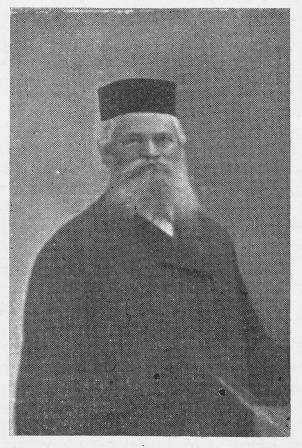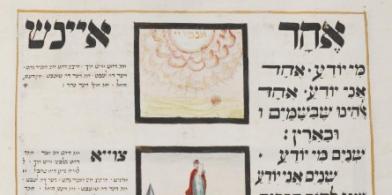The Ahava Rabah Steiger is also known as Freygish. When the prayer includes a range of more than an octave, the sixth step under the Finalis is always augmented. This steiger includes characteristic motifs in the phrygian scale with a major third, so we get an augmented second between the second and the third scale steps. When a prayer has a range of more than an octave, the sixth step under the finalis is always augmented:

The Characteristic motifs of the Ahava Raba steiger are sung by the cantor or the service leader in a unique manner that is open to adaptation and interpretation according to the lyrical sentence and its length, while maintaining the order of the motifs. When the musical phrase appears according to the motifs' basic order, the sentence is separated into two parts. This is a form of psalmody where the first segment ends with a half cadence and the second segment ends with a final cadence and closing motif.
The two following prayer segments are examples of typical motifs of the Avaha Raba steiger.
First Segment. Vekhulam Pothim et Piem:
The Motifs of the First Segment *
1. The Opening Segment – establishes the major chord (in this case: C-E-G) and finishes on the fifth scale degree (G) that is emphasized by a repetition.
2. The Development Motif – this motif develops the upper range and establishes the minor chord that is built upon the fourth scale position and is used as a rest for the motif.
3. The Half Cadence Motif – this motif ends the first half of the segment and is usually a rest on the third scale degree (E).
4. The Opening motif of the Second Part – the motif that heralds and prepares the closing motif. Its last note is the Finalis' leading tone (Sub-Tonic – the note B natural).
5. An additional heralding motif with a rest on a lowered second (D Flat). It allows the cantor to defer the arrival of the closing motif even when it is demanded by the text.
6. Closing Motif – reaches the Finalis by way of the lowered second.
Second Segment, Kulam Ahuvim:
The Motifs of the Second Segment
1. The Opening Segment – a different version of an opening motif: first inversion of the chord (C-F-A) and a rest on the fourth scale degree that is emphasized by a repetition.
2. Development Motif.
3. Half Cadence Motif.
4. The second part opening motif that heralds the closing motif.
5 + 6. Additional heralding motif that end on the lowered second and is combined with the closing motif.
An important characteristic that can be seen with these two prayer segments is the abilities that a trained cantor has in adapting and developing the typical characteristics of the steiger, while being limited to the confines of the lyrical line and its length, as well as the fixed notes of each motif.
*Each motif ends on a rest that is notated by a fermata.
Modulations
In some prayers, the cantor may move from one Steiger to another Steiger or scale. This transition is made by special motifs. There are different forms in which one can modulate from the Ahavah Rabbah Steiger to the other modes. Below are a few examples of typical modulations: The transition from the Ahavah Rabbah Steiger to a minor or major scale is usually done with a sixth chord built on the finalis. When modulating to a major chord the sixth note is raised by a half tone. Other modulations are more direct with the finalis being the pivot tone, and also remaining the finalis of the new Steiger.
The following example is a common transition from Ahavah Rabbah Steiger to a major scale and back, from the prayer “Nekadesh et Shimkha Ba'Olam.” Sung by cantor Asher Ben-Shalom from Kibbutz Shluhot (See sound example below).
Explanation:
The A part is sung in Ahava Rabba (the opening motif). The transition to the major scale takes place at the B-1 section with a sixth chord built upon the finalis of E, in which the sixth is raised by a half tone. This sixth chord is called by cantors “major sub-dominant”, because the fourth note – A – is used as a pivot note and becomes the finalis of the new major scale. The E that was the previous scale's finalis becomes the dominant note. In the B-2 section the transition back to Ahavah Rabbah begins through the upper tetrachord with an augmented second (similar to Hijaz Kar whose scale is made out of two tetrachords, each with an augmented second). Ahavah Rabbah Steiger is then re-established in the C section.








